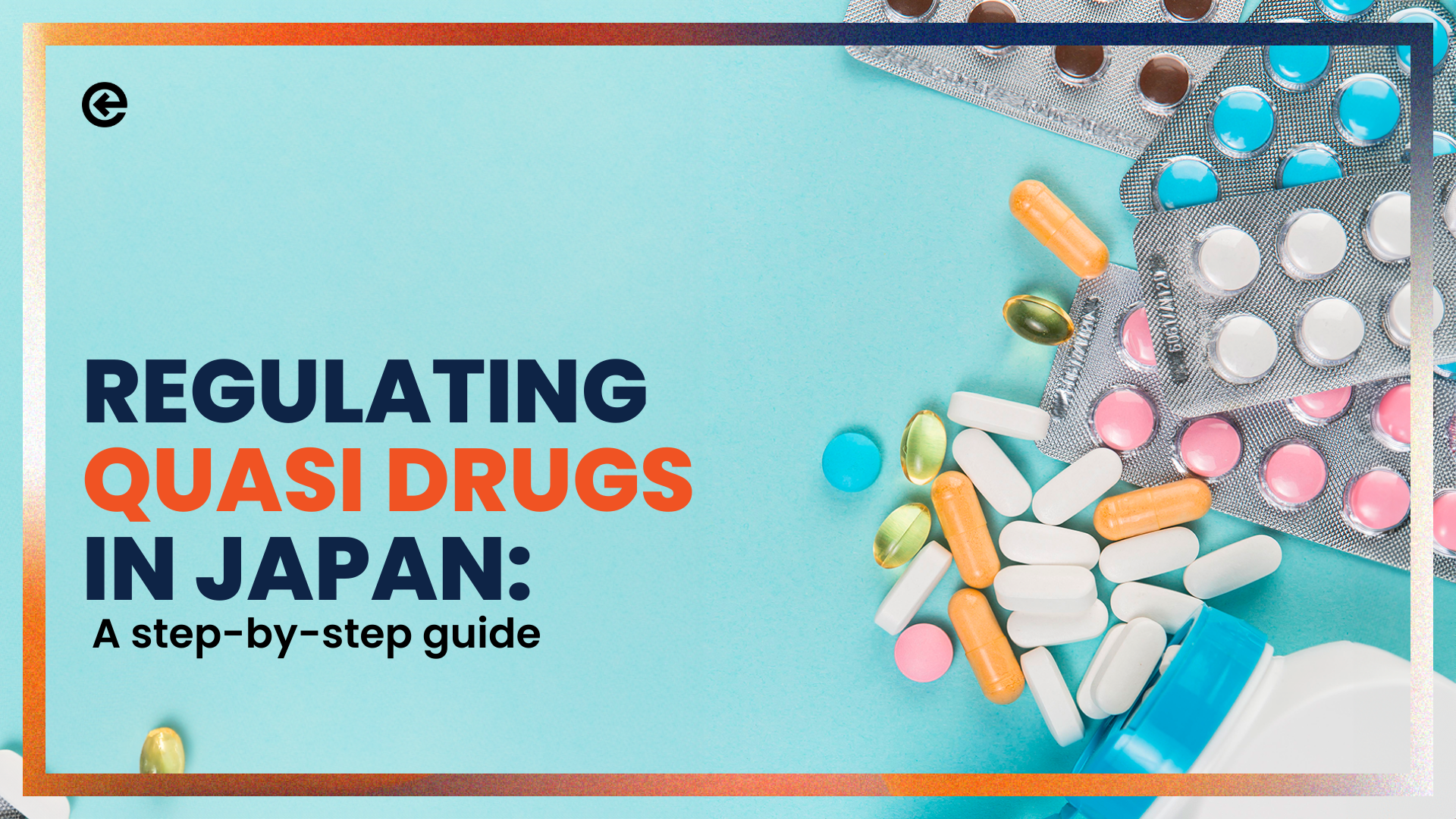Regulating Quasi-Drugs in Japan: A Step-by-Step Guide
Japan has long been recognized for its rigorous and meticulous approach to healthcare regulations. At the heart of this robust system are two pivotal organizations: the Pharmaceutical and Medical Devices Agency (PMDA) and the Ministry of Health, Labour, and Welfare (MHLW).
Their roles in overseeing the quasi-drug sector provide an excellent case study about Japan’s commitment to safeguarding public health while promoting industry growth.
Understanding Drugs and Quasi-Drugs
Before delving into the roles of the PMDA and MHLW, it’s essential to distinguish between drugs and quasi-drugs.
A drug is a substance used to diagnose, cure, treat, or prevent diseases, having undergone rigorous testing to determine its efficacy and safety.
Quasi-drugs, on the other hand, fall in between cosmetics and conventional pharmaceutical drugs. They don’t quite fit the traditional drug mold, as they might not have curative properties, but they possess therapeutic or preventive qualities. Examples include certain hair growth treatments, disinfectants, antiseptics, etc.
The Role of PMDA
The PMDA operates as an independent administrative organization, interfacing between the pharmaceutical industry and the MHLW. Its chief roles in the realm of quasi-drugs include:
– Safety Assessment: The PMDA evaluates the safety of quasi-drugs, ensuring they don’t pose undue risks to consumers.
– Facilitation of Product Reviews: Acting as the bridge between businesses and the MHLW, the PMDA offers guidance on regulatory requirements, helping streamline the review process.
– Post-Marketing Surveillance: Beyond just the initial approval, the PMDA is actively involved in monitoring the effects of quasi-drugs in the broader market, ensuring long-term safety and efficacy.
The Role of MHLW
The Ministry of Health, Labour, and Welfare (MHLW) is the overarching governmental body in charge of public health, labor standards, and social welfare. When it comes to quasi-drugs, its responsibilities include:
– Legislation and Policy Formulation: The MHLW sets the rules, laws, and policies governing quasi-drugs in Japan.
– Final Approval: While the PMDA facilitates and reviews, it’s the MHLW that gives the final nod, officially granting or denying market access to quasi-drugs.
– Enforcement and Oversight: The MHLW ensures that all approved products continue to meet their set standards and can pull products from the market if they fall short.
– Public Communication: The MHLW often serves as the primary communicator to the public about any risks, recalls, or safety alerts related to quasi-drugs.
A Step-by-Step Guide to Importing Quasi Drugs in Japan
If you’re looking to import these products into Japan, here’s a guide to ensure a smooth import process.
1. Partner with a Local ACP or IOR
It’s essential to engage a local agent (ACP) or Importer of Record in Japan. They’ll be familiar with the intricacies of the process and can liaise with the relevant authorities on your behalf.
2. Prepare Necessary Documentation
Ensure that you have:
– A product formula, including ingredient details and quantities.
– Clinical or non-clinical data supporting the product’s safety.
– Product manufacturing details, including processes and quality controls.
– Packaging and labeling information.
3. Submit Application to PMDA
Your local partner will submit the application for approval to the Pharmaceutical and Medical Devices Agency (PMDA). Ensure that all the necessary documentation is included to avoid delays.
4. Undergo PMDA Review
The PMDA will review your application and assess the safety and efficacy of the quasi-drug. This process can be lengthy, sometimes taking several months, so be prepared to wait for an average of 180-270 days.
Click here to learn more about this.
5. Obtain Approval from MHLW
After a positive review from the PMDA, the Ministry of Health, Labour, and Welfare (MHLW) will provide the final approval. This is the green light for you to start importing your quasi-drug products into Japan.
6. Arrange for Importation
Once approved, coordinate with a reputable logistics provider familiar with importing health products into Japan. Ensure they’re aware of any specific storage or transportation requirements for your product.
7. Conform to Post-Market Surveillance
After your product is on the market, you must continue to ensure its safety. Regularly review and report any adverse reactions to the MHLW. This is an essential step in maintaining the product’s status in Japan.
8. Stay Updated on Regulations
Japanese regulations can evolve. It’s vital to stay informed about any changes, especially those related to quasi-drugs. Regularly check in with your local partner and subscribe to updates from PMDA and MHLW.
Conclusion
The intricacies of Japan’s healthcare regulatory framework, especially concerning quasi-drugs, highlight the nation’s commitment to balancing public safety with industry growth. The dual roles of the PMDA and MHLW show a system designed to scrutinize, assess, and monitor.
Ready to Enter the Japanese Market?
Japan’s market dynamics and regulatory intricacies can be daunting at first glance. We, at COVUE act as your local operating partner in Japan. With our 360 innovative market entry solutions, we simplify complex processes and offer businesses a clear path to market entry.


